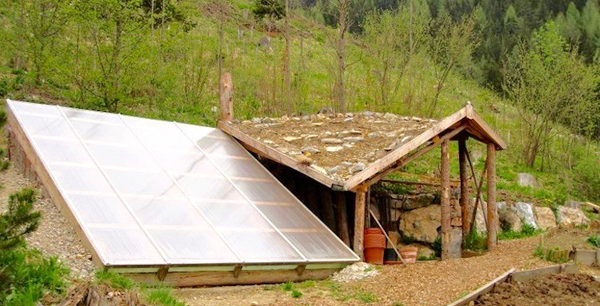
“From vertical farms to solar-powered “farms from a box,” we’ve seen how farming technology has grown leaps and bounds in recent years. But for those who prefer something a little more rustic, growing food from a hole in the ground is as low-tech as you can get.
A walipini, meaning “place of warmth” from the Amaraya Indian language, is an underground greenhouse with a transparent (usually plastic) covering that stays warm by passively soaking up the sun’s heat and absorbing the earth’s thermal energy.
Fruits and vegetables can be grown year-round, making it ideal for communities in colder locations that can’t usually grow their own fresh and local produce during certain parts of the year.
The farming method isn’t exactly new. Walipinis have been used in South and Central America for decades, including one that can grow bananas at 14,000 feet in the Andes.
The technique was notably adopted by The Benson Institute, a worldwide food security program of the Mormon church. According to The Plaid Zebra, the Benson Institute and its team of volunteers built a community-sized 74-feet-by-20-feet walipini in La Paz, Bolivia for around a mere $300.”
More from the source: Off Grid Quest.com
Thanks to Susan for this tip.
Related:
Build a $300 underground greenhouse for year-round gardening
Earthbag Pit Greenhouse Plans
Earthbag Pit Greenhouses

Doesn’t an underground construction require “deadmen” to prevent the walls from collapsing? I would LOVE a walpini, but am confused about how to secure the “deadmen” to the earthbags if required. Than1, Cathy
It mostly depends on what type of soil you have. Some soils are very stable and will hold their shape when you build this type of greenhouse. Other types are looser and will slip and collapse. The worst would be loose sandy soils. Talk to local builders or engineers in your area. You may have a type that will work with some additional support from deadmen. Wrap the barbed wire between earthbag courses around the deadmen.
What about cost of installation?
Did you mean insulation or installation? Walipinis largely rely on stored heat in the ground to stay warm, but they would benefit from insulating the glazing at night.
WE love “wallipini technology”!